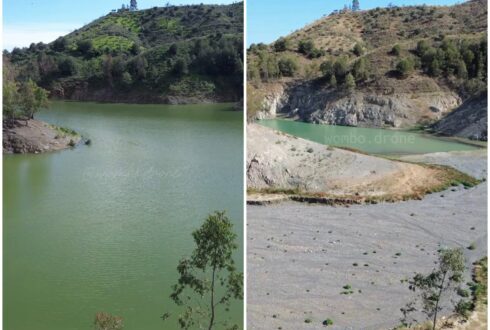Malaga Province now has enough water for nearly three years’ consumption following two weeks of continuous rain.
The Marbella Desalination Plant, Marbella’s wells and Murcia’s reservoirs have all contributed to the improvement of the water situation in the region. This was just a few months after the authorities considered shipping water out of the region due to the severe drought.
Malaga has recorded 513 litres on average of rain so far this season.
Combining runoff with previously stored water has increased reservoir levels by nearly 45%, holding 273,39 million litres.

This volume represents approximately 18 months of consumption for Costa del Sol, Axarquía, and the capital—if the water could be freely transferred between systems and if reservoirs were the only source.
However, infrastructure problems persist.
Patricia Navarro is the Andalucian government delegate to Malaga. She says that the water connection between the Western Costa del Sol capital and Malaga remains broken after recent storms damaged pipeline near Benalmadena.
Even before the damage, wear and tear had reduced the capacity of the pipeline.
Malaga City consumes about 47 million litres per year, according to municipal company Emasa.
The actual extraction is higher—about 55 million litres—with the difference accounting for losses during desalination of water from the Guadalhorce river and processing at the Atabal treatment plant.
During the past year, half of Malaga’s water has been sourced from wells around the Guadalhorce area, opened in coordination with the Junta de Andalucía. These wells are still being assessed for their capacity.
Water treatment plants, Guadalteba and Casasola reservoirs, Guadalhorce and Conde del Guadalhorce and El Limonero are responsible for the remaining consumption.
These tanks currently hold around 172 millions litres and serve multiple communities beyond Malaga. Until recently, Malaga was even supplying water to the drought-stricken Axarquía region.
The western coastline represents the province’s largest water consumer, with Acosol (the regional water company) reporting normal demand of around 90 million litres annually—nearly double the consumption of the Malaga metropolitan area despite a comparable population.
The large difference between consumption in the capital and Costa del Sol is due primarily to the irrigation needs of golf courses, villas and tourists.
Restrictions led to a 10-12% reduction last year.
The main sources of water supply in the area are reservoirs, wells and desalination.
La Concepción reservoir, which had to release water last week after approaching critical safety levels, typically provides about 48 million litres annually.
Wells contributes approximately 34 million litres with the rest coming from the desalination facility.
The current expansion of existing desalination facilities will increase the capacity to between 18-20 million litres of water per annum.
In the future, plans call for constructing a second facility in Mijas. The initial capacity is 20 million litres and could double with expansion. This would help conserve underground water resources.
Recycling water is crucial to maintain these non-potable applications.
The Axarquía region, hardest hit by drought in recent years, normally consumes about 22 million litres annually for human use—a figure that has decreased over the past two years due to severe restrictions.
The region hosts the province’s largest reservoir, La Viñuela, which had dropped to critical levels around 10% capacity but now holds more than 50 million litres following recent rainfall—sufficient for two years of human consumption.
The area can exchange water with other regions through the Peñón del Cuervo pumping station.
The Drought Committee will meet on 18th March to determine the amount of irrigation water that can be provided to farmers who have received minimal supplies up until this point.
The inland regions in Ronda, Antequera and the province of Murcia operate independently. They rely on natural springs and local wells which make calculations about consumption and reserves more complicated.
As the El Torcal spring resumed gravity flow in Antequera recently, Mayor Manuel Baron announced sufficient water reserves to last three years.
The city also supplies water to Valle de Abdalajís after Adif rendered the town’s wells unusable during high-speed rail construction.
Ronda similarly depends on wells beneath the city, with extraction points in Cañada de Puya.
According to the city’s council, annual consumption amounts to 2.85 million. Due to its location within one of the wettest valleys in this region, the area has not experienced drought in recent times.
 Costa News Spain Breaking News | English News in Spain.
Costa News Spain Breaking News | English News in Spain.




